17 Birds That Start With A (With Photos)

For this article, we’ve chosen a selection of 17 birds that start with the letter A. These include everything from common birds in the United States to rare South African species you’re unlikely to ever see.
There are close to 400 birds whose common names start with A! Many of these have their color (Ash), home continent (American), or the name of the person who named them (Albert’s) in their names.
There are just 7 birds (if you count native names) that start with A for the bird type. We’ll take a look at a few of those first.
1. Albatross
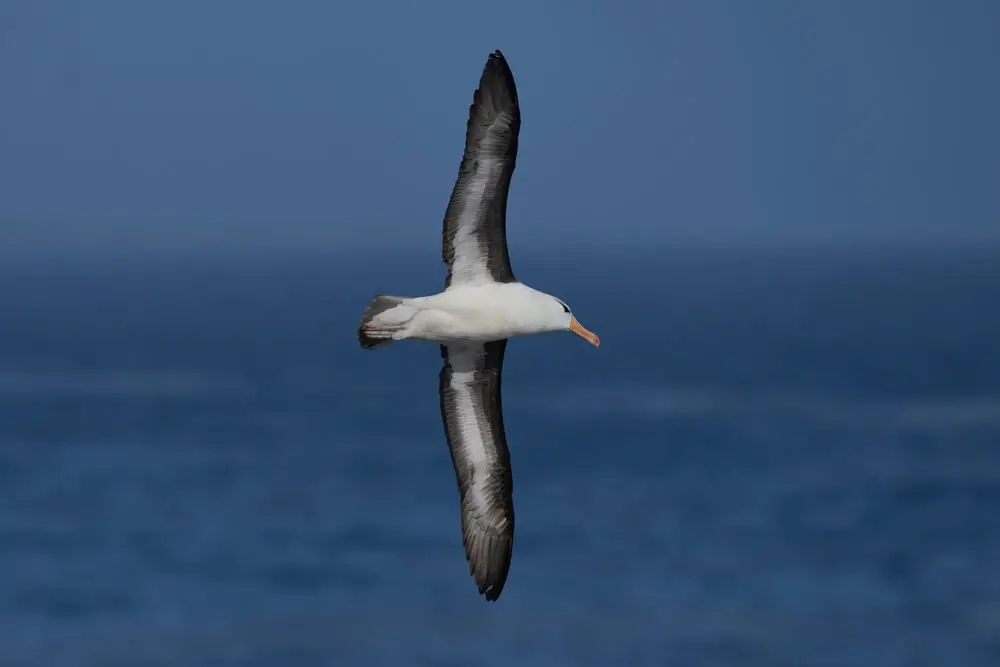
Scientific Name (family): Diomedeidae
The albatross includes a family of birds renowned for their wingspan. In fact, some of the 22 species of albatross reach wingspans exceeding 12 feet. That makes them one of the longest (by wingspan) of any living bird species.
However, these majestic, soaring birds are very close to endangered. 21 of the 22 species are listed with a status of “concern”, meaning their environment and populations are threatened.
Albatrosses do have a broad range, however. In fact, most range the full length of the Southern Hemisphere, from Antarctica to Australia, to South Africa and South America.
Only four species are found in the Northern Hemisphere, with all four in the warmer parts of the Pacific Ocean.
What do they eat? Mostly fish, squid, and crustaceans. However, the albatross isn’t too proud to steal scraps from another predator’s meal, or to eat from carrion.
2. Anhinga

Scientific Name: Anhinga anhinga
The Anhinga, sometimes called the snakebird or the American Darter, is a large water bird native to the Southern United States, Central America, and South America.
Anhingas are also mostly only seen in the United States during the breeding season, where they flock to mate along the southern coast.
In most cases, the Anhinga spend their lives on, in, or near water. That’s because their diet consists almost entirely of wetlands animals like crayfish, frogs, catfish, pickerel, and shrimp.
However, with a wingspan often close to 4 feet, these birds can be extremely impressive. Still, their sharply pointed beaks are best suited for picking small crustaceans out of low and slow-moving water.
3. Auklet
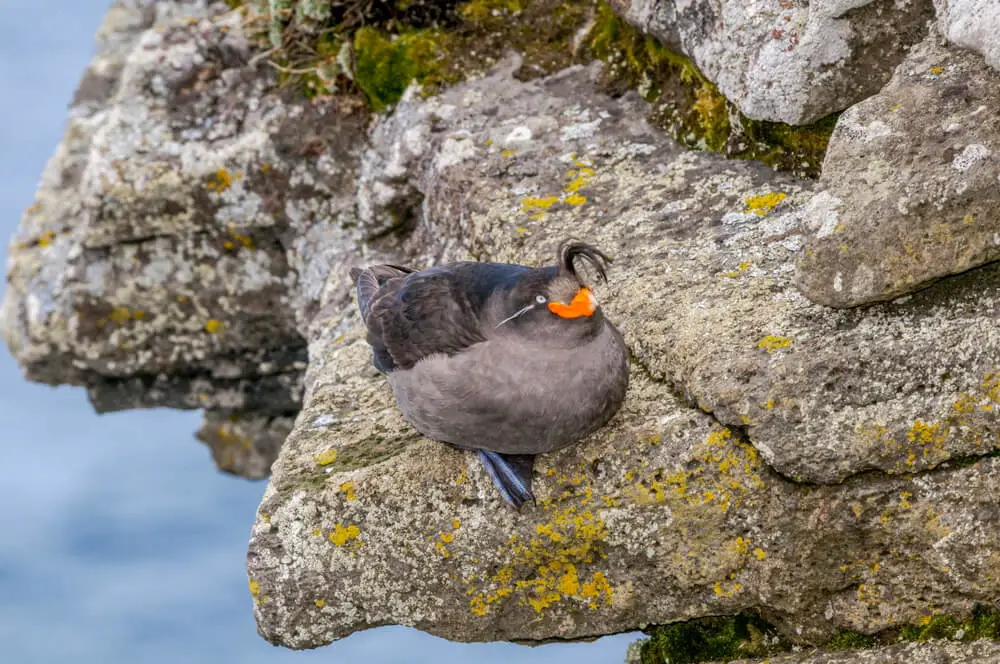
Scientific Name: Aethia cristatella
The Auklet or crested auklet is a small seabird in the same family as puffins. Like their better-known cousins, auks sport colorful beaks and sport tufts of feathers on their heads.
Like other seabirds, auklets live in large colonies. These colonies are so dense that the largest is close to 1 million birds – of a total population estimated to be about 6 million.
That works as Auks live exclusively in the Northern Pacific and the Bering Sea – or the stretch of water between Russia and Alaska.
While you can see Auklets in the United States, it’s very unlikely unless you happen to live on the coast in Alaska, or you take a cruise.
4. Avocet
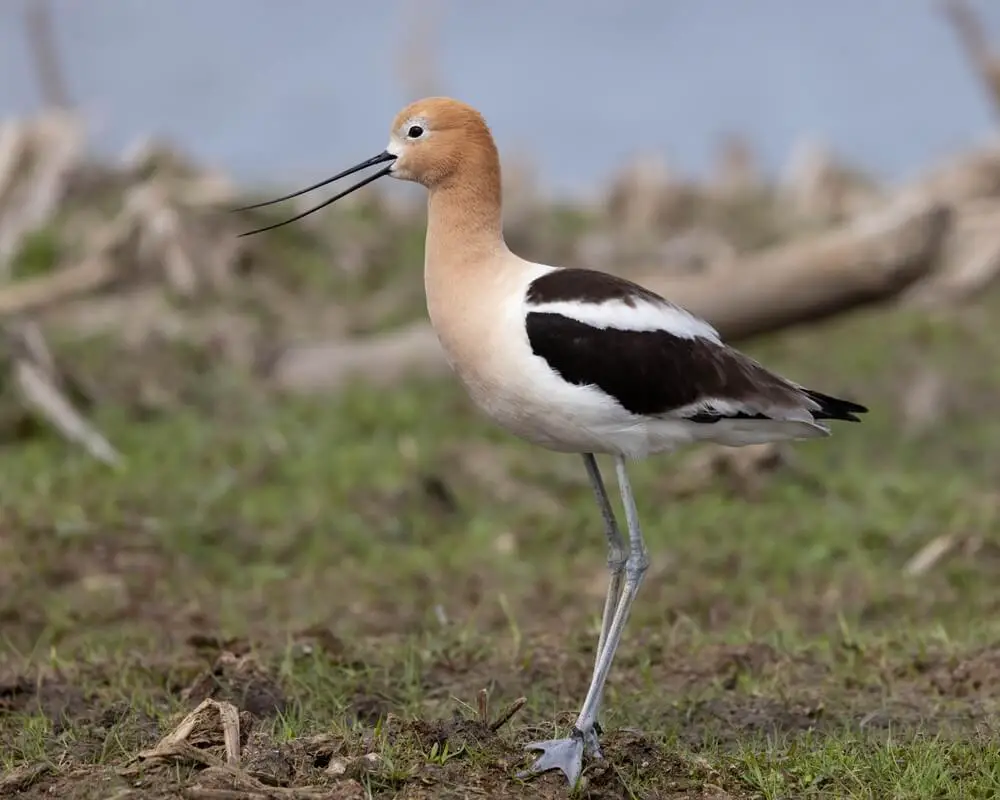
Scientific Name (genus): Recurvirstra
Avocets are a genus of four species of birds all native to wetlands. However, with two species native to the Americas and South America, one to Europe and Asia, and one to Australia, they’re extremely widely distributed.
In the United States, you’re likely to see the American avocet in wetlands across Florida, Mexica, the central and western United States, and all the way up into Canada.
Avocets are waders, meaning they have long, stork-like legs. They also have long, pointed bills, which allow them to target small fish and crustaceans on the bottom of low wetlands.
5. Akohekohe
Scientific Name: Palmeria dolei
The Akohekohe or crested honeycreeper is a bird endemic to the island of Maui in Hawai’i. At about 7 inches in length, it’s a medium-sized bird. While closely related to the rosefinch, honeycreepers are also unique to Hawai’i.
These finches also have unique bill shapes, with many evolved to specifically steal nectar from flowers.
Unlike the common finch, akohekohes sport bright reddish patches and tufts of feathers on their heads, giving them camouflage against the bright colors of the flowers they feed on.
While they almost exclusively eat nectar, akohekohes are aggressive birds. They’ll chase away other birds. It will also eat insects and even fruit from plants when nectar is in low supply.
6. Abyssinian Catbird
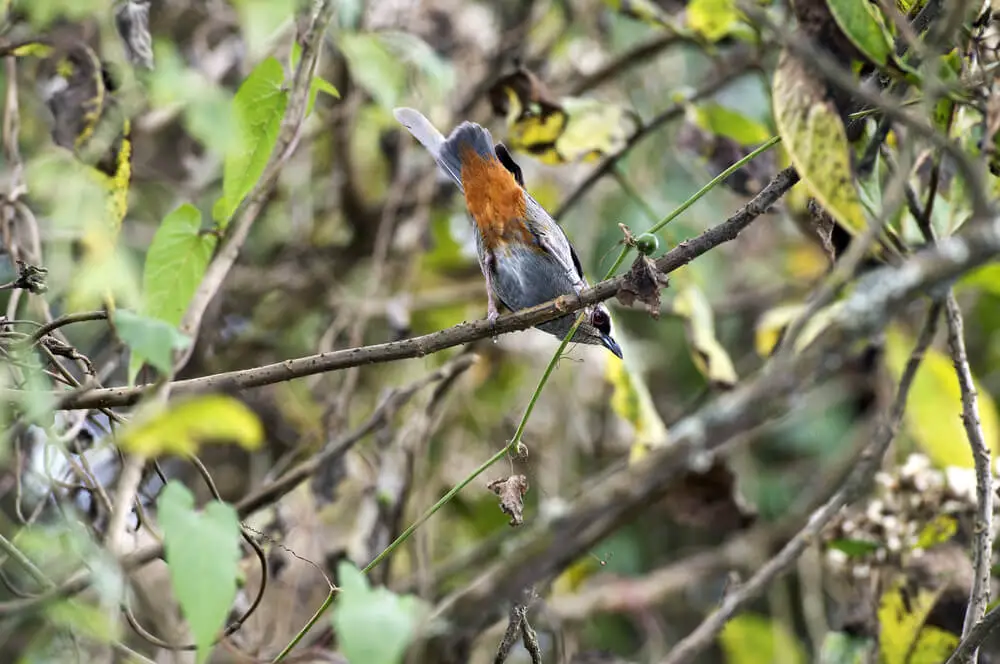
Scientific Name: Sylvia galinieri
The Abyssinian Catbird is a small, gray bird native to Ethiopia, where it’s almost exclusively found in the mountains.
In addition, while listed as a catbird, the Abyssinian catbird is not related to any other bird with the name. Instead, it’s a “typical warbler”.
While the genus is “typical”, the Abyssinian Catbird is renowned for its song. They’re famous for loud and beautiful songs, with the male and female creating very different noises.
Here, males create loud ringing sounds and females purr; they often harmonize together.
7. Acacia Pied Barbet
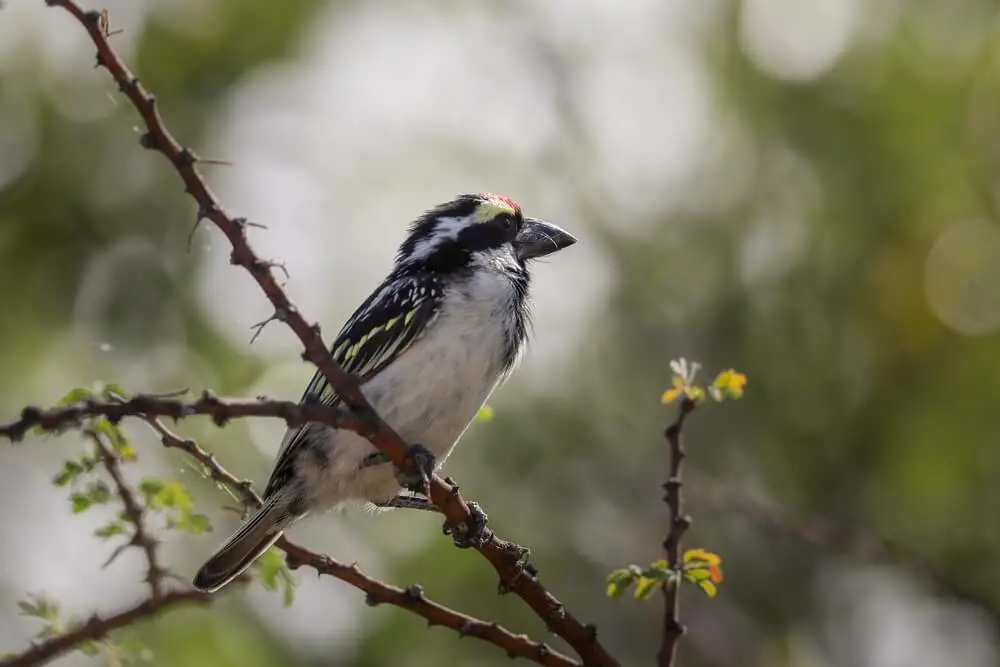
Scientific Name: Tricholaema leucomelas
The Acacia Pied Barbet is a South-African bird that’s closely related to the Woodpecker. Unlike the woodpecker, these birds have small and thick beaks, which they use to break through wood and through the exoskeletons of their primary food, beetles.
Like woodpeckers, barbets can be quite colorful. Most sport red spots and yellow stripes along their head and back. However, the Pied barbet is one of the least colorful of the barbets.
In addition, like woodpeckers, barbets normally drill holes into trees and form a cavity to live in. From there, they hatch just 2-4 eggs a year, but do share nesting between genders.
8. Acorn Woodpecker
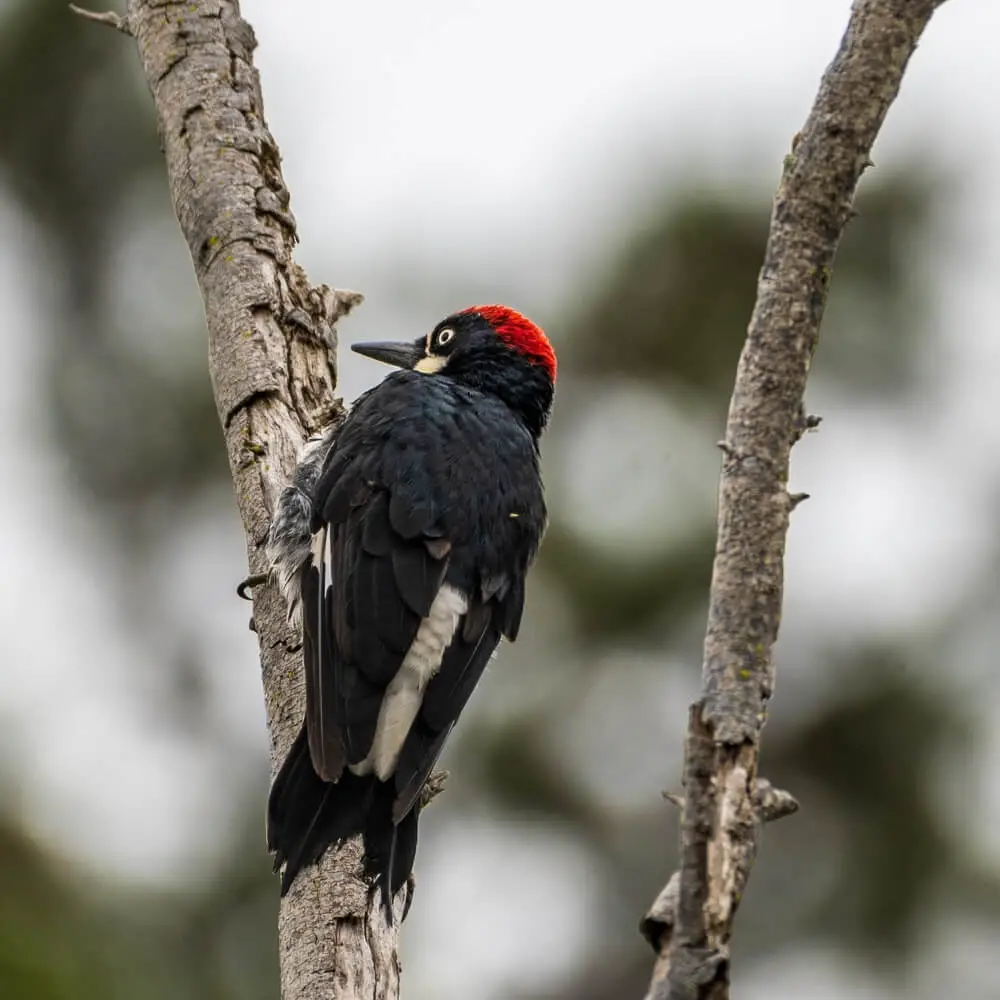
Scientific Name: Melanerpes formicivorous
The Acorn Woodpecker is one of the most famous of the American woodpeckers, with a range down the entirety of the western coast, from Oregon to South America.
These medium-size woodpeckers don’t command as much attention as larger American woodpeckers, but with small red patches and a unique lifestyle that involves living in groups of up to 15 individuals, they’re more noticeable than many other woodpeckers.
In fact, the Acorn woodpecker is famous for its habit of drilling holes into “granary” trees and storing acorns into holes.
In 2023, a pest control company found a family of them living in a house, where they had stashed over 700 pounds of acorns as part of their food supply.
However, in the wild, the acorn woodpecker can create significantly large food hoards. They often target old and dead trees, which can be spotted by their distinctive, acorn-speckled appearance.
See also 10 Interesting Facts About The Great Spotted Woodpecker
9. Acre Antshrike
Scientific Name: Thamnophilus divisorius
The Acre antshrike is a small antbird native to a tiny region of Brazil. The bird is only found within a few miles in low-lying woodland. However, the Arc antshrike maintains a stable population, and it’s not endangered.
Like other antshrikes, Acre antshrikes specialize in following ants to eat, not the ants, but the insects flushed out of hiding by those ants.
Because the ants scare off invertebrates in their path that are trying to attack them, those invertebrates leave their hiding places, where they make easy prey for the antshrike.
The Acre Antshrike is also completely dark gray, unlike many other birds in the family, which are often spotted or splotched to provide better camouflage in the jungle.
10. Admiralty Cicadabird
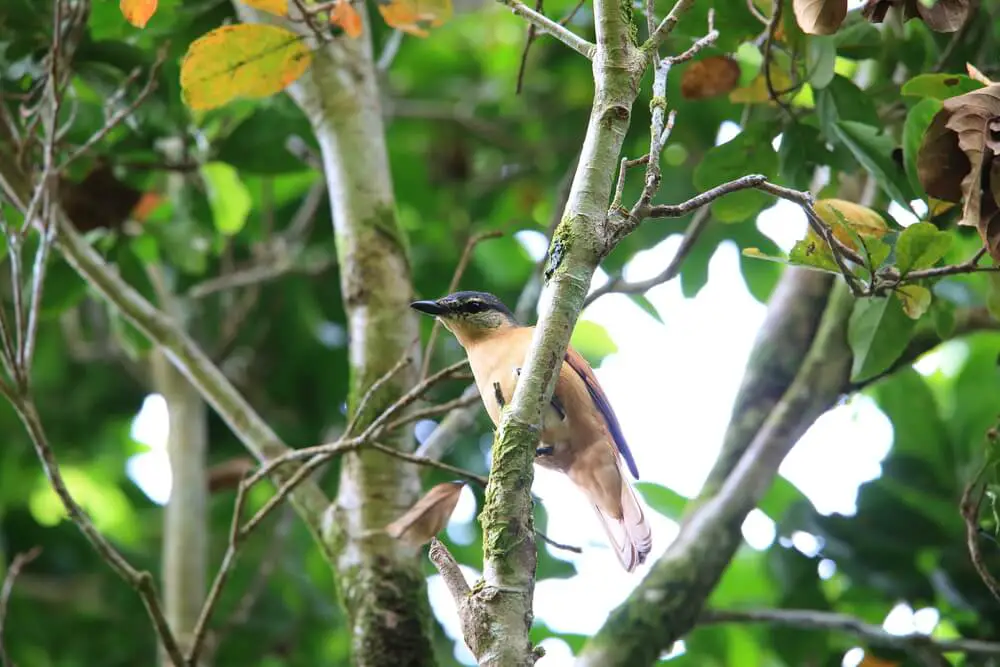
Scientific Name: Edolisoma admiralitatis
The Admiralty Cicadabird is a species of Cicadabird endemic to the Admiralty Islands off of New Guinea.
These birds, like finches, are famous for their ability to speciate, with many cicada birds showing unique properties as they adapted to life on a specific island.
This also means that cicada birds are rare and often impossible to see outside of a tiny geographic area.
For example, the Admiralty Cicadabird is dark gray and almost uniform in color. The common cicadabird, to which it’s most closely related, is light gray with stripes on the wings.
11. Agile Tit-Tyrant
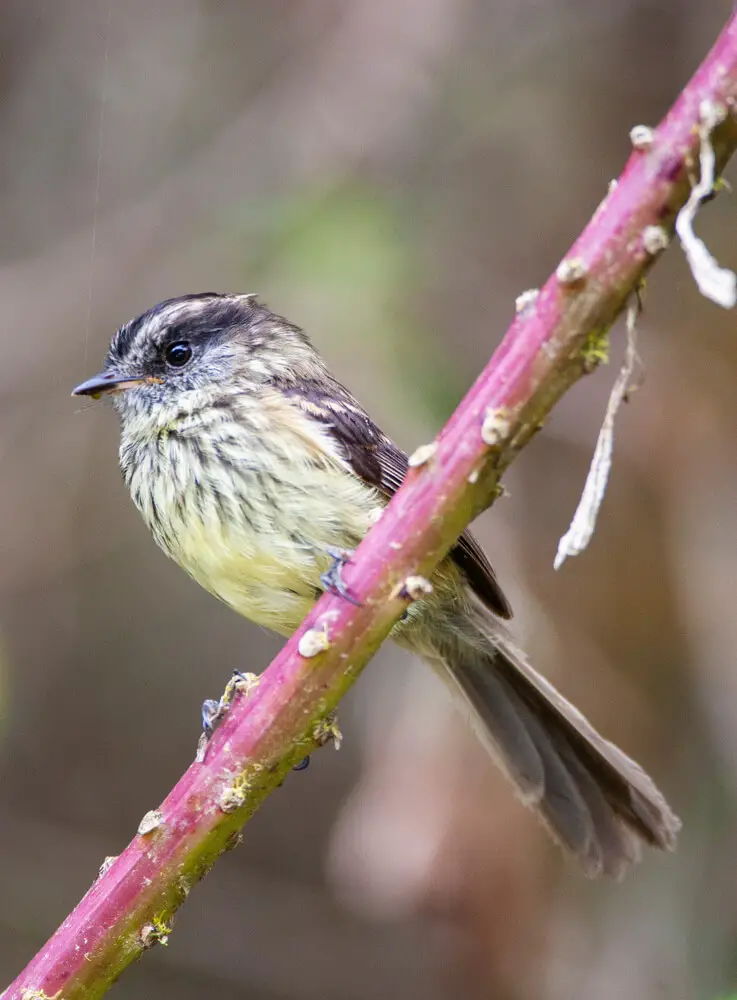
Scientific Name: Uromyias agilis
The Agile Tit-Tyrant is a tyrant flycatcher native to the mountains of the Andes. This tiny bird is part of one of the more diverse bird families in the Americas. However, most tyrant flycatchers are solitary birds.
They get their names from their aggressive protection of their territory, where a bird smaller than 3 inches can hurl itself at an interloper many times over until the larger bird goes away.
Agile Tit-Tyrants are gray with yellow bellies and white stripes on their faces. However, you’re unlikely to see one outside of a very small region.
On the other hand, tit-tyrants abound across the Americas, and you’re almost certain to see some of its cousins if you go bird-watching.
12. Alagoas Antwren
Scientific Name: Myrmotherula snowi
The Alagoas Antwren is a critically endangered species of Antwren endemic to Brazil.
The bird is one of a larger number of similar passerine birds, which largely feed by following colonies of ants hunting for greenery and prey on the insects escaping from those ants.
The Alagoas Antwren lives in pairs and normally make nests on branches. However, these birds often only lay two eggs per season – meaning that ranching, deforestation, and urban areas contribute to population loss.
Most notably, antwrens defend their territory. However, they join flocks of other species of birds following ant colonies, with each bird specializing in its own insect type.
13. Albert’s Lyrebird
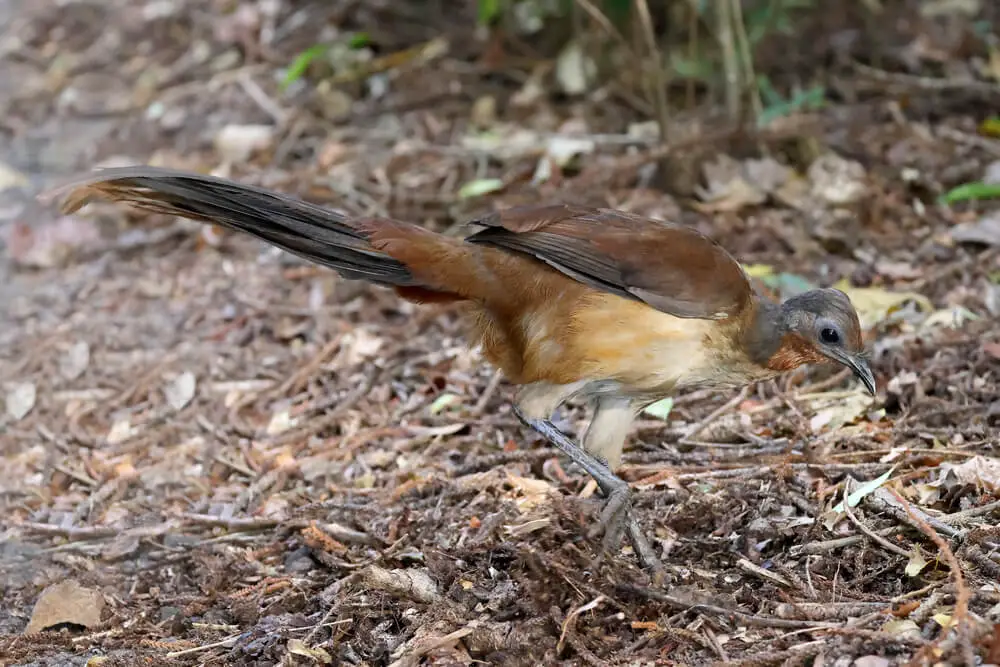
Scientific Name: Menura alberti
Albert’s Lyrebird is a species of songbird native to the subtropical rainforests of Australia. However, with an extremely small distributional range, there are estimated to be less than 8,000 of the birds alive.
Still, Abert’s Lyrebird is notable. These birds look like pheasants with diminutive coloring. They sport long tail feathers, brown bodies, and smooth, black heads – which make them remarkably distinctive against the more well-known superb lyrebird.
See also 11 Intriguing Facts About The Rufous Hummingbird
However, with one of the smallest breeding ranges of any bird, Albert’s Lyrebird is still extremely notable.
14. Azuero Dove
Scientific Name: Leptotila battyi
Nearly everyone is familiar with the common pigeon or dove. However, its many species include beautiful and rare types of doves. The Azuero Dove is a small, brown dove with a gray neck and head and pink to red throat and chest.
It’s also endemic to a tiny area in Panama, especially the Coiba and Cebaco islands. That makes this species extremely rare, so it’s unlikely you’ll ever see one.
15. Alpine Chough
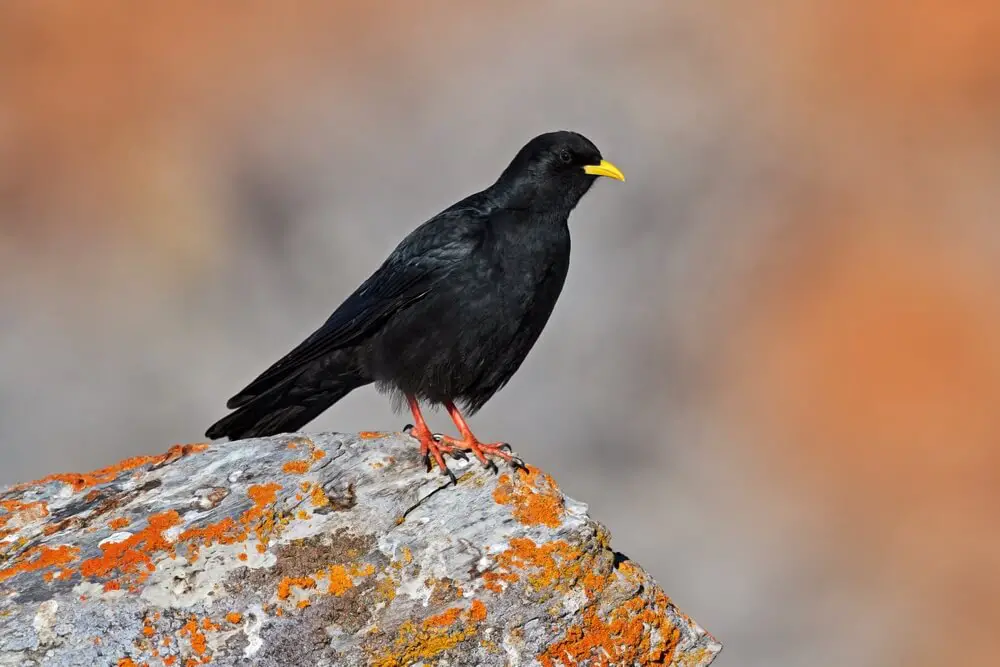
Scientific Name: Pyrrhocorax graculus
The Alpine Chough is a bird in the crow family, native to Europe, India, and Asia.
The birds stand out, with jet black feathers and a bright yellow or bright orange beak. However, they otherwise look very similar to other birds in the crow family, and choughs may be mistaken for blackbirds.
Choughs also feed almost entirely on invertebrates such as beetles and snails in the summer. During the winter, they turn to old berries and plant bulbs, which can make them a pest in gardens.
However, with most of these birds living exclusively in the mountains, few people ever have problems with them.
16. Amazon Kingfisher

Scientific Name: Chloroceryle amazona
The Amazon Kingfisher is just one of a species of water kingfishers, but with brilliant blue feathers and a red chest, it’s one of the most distinctive.
These medium-sized birds average about a foot long and are found from southern Mexico to Northern Argentina.
There, they live around water and, as the name suggests, it lives on a diet of fish and crustaceans. Here, the kingfisher sits on a branch and then dives deep into the water after its prey.
Kingfishers are also distinctive for their large heads and beaks, which can be over half the size of the rest of the body.
17. Ampay Tapaculo
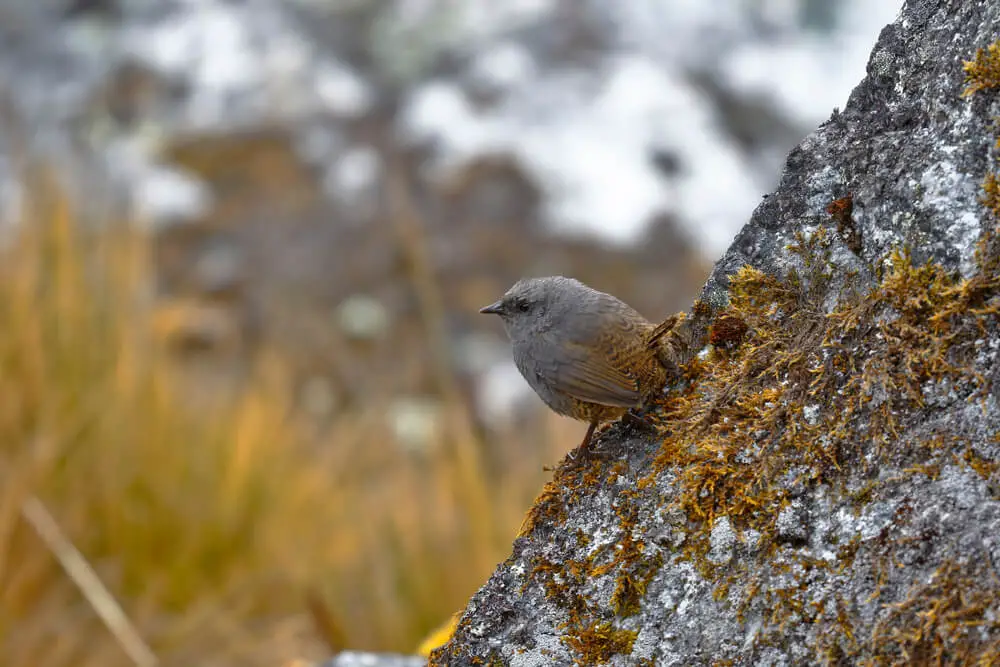
Scientific Name: Scytalopus whitneyi
The Ampay Tapaculo is a species of bird endemic to Peru. It’s also extremely small with dense feathers, giving it a “fluffy” appearance.
However, with a native range of just two known locations high in the mountains, it’s also extremely rare.
These tiny dark gray birds are normally no more than about 16 grams.
In addition, while they don’t stand out in terms of coloration, most are a uniform dark gray, that coloration allows them to blend in perfectly with their rocky native range.

